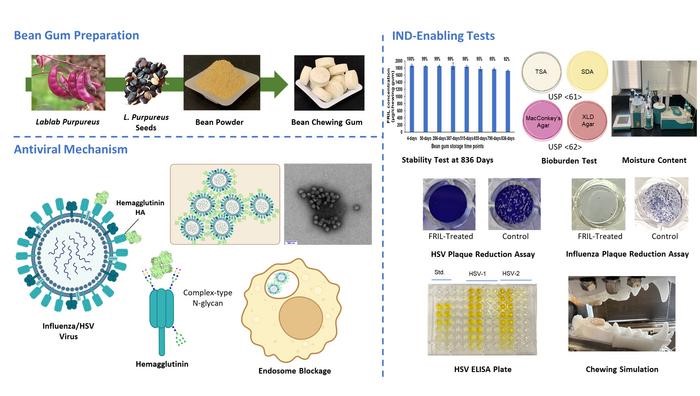A team of researchers from the University of Pennsylvania has focused their attention on targeting the oral cavity to fight these viruses, given that they are primarily spread via the mouth rather than the nose
In an exciting breakthrough, researchers in the United States have developed a novel antiviral chewing gum that may significantly reduce viral loads of herpes simplex viruses and influenza strains, offering a promising new tool in the battle against these widespread infections.
Seasonal influenza epidemics occur every year, contributing to a substantial global health burden, while herpes simplex virus-1 (HSV-1), primarily transmitted through oral contact, infects over two-thirds of the world’s population. Despite the ongoing efforts to combat these viruses, challenges remain, such as low vaccination rates for influenza and the absence of a vaccine for HSV. This highlights the urgent need for innovative approaches to prevent and treat these infections.
A team of researchers from the University of Pennsylvania has focused their attention on targeting the oral cavity to fight these viruses, given that they are primarily spread via the mouth rather than the nose. The study, published in Molecular Therapy, presents an antiviral chewing gum made from lablab beans that showed promising results in experimental models, reducing viral loads of both HSV-1 and HSV-2, as well as two strains of influenza A—H1N1 and H3N2.
The key ingredient in the chewing gum is derived from Lablab purpureus, a bean variety naturally rich in a protein known as FRIL (Fluorescent Antiviral Trap Protein), which has potent antiviral properties. By incorporating this protein into the gum, the researchers aimed to neutralize the herpes and influenza viruses that are common causes of infection and transmission.
In their experiments, the researchers found that a small amount of the lablab bean gum—just 40 milligrams from a two-gram tablet—was sufficient to reduce viral loads by more than 95%. This level of reduction represents a substantial step forward in controlling the spread and severity of these viruses.
“These observations are very encouraging for evaluating bean gum in human clinical studies as a means to minimize viral infections and transmission,” said Dr. Henry Daniell, a professor at Penn’s School of Dental Medicine and lead investigator of the study. “Our research shows that lablab beans, which have been used in food and medicine for centuries, can also play a vital role in fighting modern viral diseases.”
What sets this antiviral chewing gum apart from other antiviral treatments is its practical, user-friendly delivery method. Since the gum is designed for use in the mouth, it targets the site where HSV-1 and influenza are most likely to enter the body, potentially curbing transmission right at the point of contact. The gum formulation also meets the stringent safety and quality requirements set by the U.S. Food and Drug Administration (FDA) for clinical-grade drug products.
In addition to its effectiveness against common human viruses, the team is now exploring the potential of lablab bean powder to combat bird flu, which has been significantly impacting North America in recent years. “The ability of the FRIL protein to neutralize not only human influenza viruses but also avian (bird) flu is a timely innovation to help prevent their spread,” Dr. Daniell added.

The development of this chewing gum marks an exciting new frontier in antiviral treatments, offering a broad-spectrum approach that could help reduce the global transmission of viruses such as the flu and herpes. The researchers now hope to advance the technology into clinical trials to determine its safety and efficacy in humans.
The global challenge of controlling the spread of viruses continues to grow, and innovations like the antiviral chewing gum represent an important step forward in addressing the public health threat posed by these infections. If proven successful in human trials, this gum could be a game-changer in reducing viral transmission and potentially preventing widespread outbreaks.









